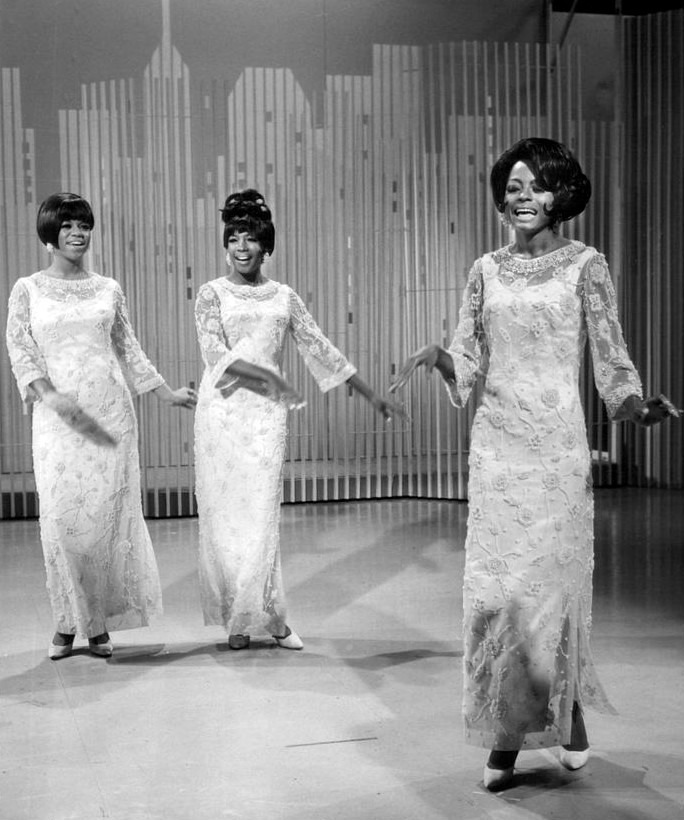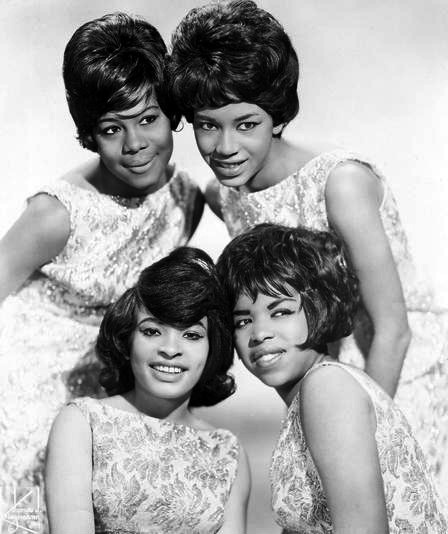Introduction
Earl-Jean (born Earl-Jean McCrea) is an American R&B and pop singer, whose sister is Darlene McCrea, one of the original members of the all-girl R&B group the Cookies. During the 60s music era Earl-Jean also became a Cookies member in its revamping, this time scoring hits such as “Chains” (covered by the Beatles on their Please Please Me album), and “Don’t Say Nothin’ Bad (About My Baby)”. The group also backed Ray Charles as the Raelettes. She pursued a solo career in 1964 when she joined for the label Colpix, which released her first single “I’m Into Something Good.” It became only her charting single, reaching the Top 40 pop charts. Earl-Jean released subsequent recordings but was unable to attain further success, leading her to become a one-hit wonder.
Earl Jean’s early years and Music Career
Earl-Jean “Jeanie” Reavis, also known as Earl-Jean McCrea is a former pop and R&B singer. She was born in 1942 in Brooklyn, New York. Subsequently, her family relocated in North Carolina when she was two years old. But they later returned to Coney Island where she spent her adolescence and attended Lincoln High School.
Earl-Jean with the Cookies
McCrea became a member of the vocal group, the Cookies along with her elder sister Darlene McCrea. The Cookies later changed their name to the Raelettes who eventually became Ray Charles’ backing vocals. In 1962, they signed a record deal on Goffin and King’s Dimension and issued “Chains” in 1962. “Chains” peaked at #17 on the US chart and was later recorded by The Beatles in 1963. The follow-up “Don’t Say Nothin’ Bad (About My Baby)” (which was written by Gerry Goffin and Carole King) made to #7 on the US chart in 1963. While McCrea was embarking on a tour, she was also in her pregnancy. Goffin, who was married to King at that time, was named as the father of the baby Dawn Reavis (born in July 1964). However, Goffin did not fail to give Earl-Jean financial support
Solo career and her only hit with “I’m into Something Good”
The smooth-voiced McCrea left the Cookies and ventured a solo career in 1964 where she released the single “I’m Into Somethin’ Good.” Also co-written by Goffin and King, the song became a big hit, peaking at #38 on the US Billboard chart. Also that same year, Herman’s Hermits recorded the song as their debut single which later peaked at #13. “I’m Into Something Good” was McCrea’s first and last hit. She never managed to have another major hit again.
She later quit the music business and started a new life and career. She worked as a specialist in early childhood and later owned a day care center.
The Cookies Era of Success and Controversies
Three teenagers, Dorothy Jones, Beulah Robertson, and Ethel/Darlene McCrea founded The Cookies in 1954 in Coney Island, New York, where they originally started as choir members. In August 1954, the group’s first recording session was held at Aladdin’s studios in New York. “All Night Mambo” and “Don’t Let Go,” a soft ballad with beautiful harmonies written by Jesse Stone and Howard Biggs, were two of the first songs they ever recorded. They were officially signed under Atlantic Records a few months after their discovery and given the name “The Cookies” by Jesse Stone.
The group’s second album in 1956, “In Paradise,” written by Carmen Taylor, established their status as the studio’s sweethearts. The song evokes the experience of entering an enchanting paradise where all you want to do is dream. The Cookies were able to create pictures of a tropical island with the aid of the Cues as support and their powerful voices in this song.
Another song the group released, “Passing Time,” received more local radio airplay. It has a male vocal helper as a bass line and Darlene’s bass pick-up, which was unique for a female voice in 1956. The song was written by Neil Sedaka and Howard Greenfield, who were 16 and 20, respectively, and were two of the youngest Brooklyn songwriters at the time. The song’s release also marked the start of Sedaka and The Cookies’ collaborative partnerships in the music industry.
The background of The Cookies was a bit shady; this could be because from 1958 to 1962, the group did not release any singles under their name, and other members left to create a new group. Additionally, sisters Darlene and Earl Jane are often mistaken to be the same person due to their similar looks and the similarity of how they sound.
Before they recorded their final Atlantic single, the group underwent yet another significant change. It started when Beulah, one of its members, had a misunderstanding with Jesse Stone. Stone’s relationship with the other founding members of the band was irreparably damaged when Beulah and Margie Hendrix took her place. Nevertheless, despite the problem, they continued to perform an excellent vocal performance that led to offers to record with La Vern Baker, Chuck Willis, and Ray Charles.
In 1957, the group launched a single entitled ‘King of Hearts’ under Josie Records, another Neil Sedaka and Howard Greenfield composition. The group has also toured and sung as a backup for the Cadillacs and Varetta Dillard for the song “Star of Fortune’ and “Rules of Love .”However, The Cookies did not only blossom as backup singers; they started making names as a separate group of talented young women.
In 1963 The Cookies signed their own record label Dimension Records, after their first hit song, “Chains,” in 1962 with Aldon’s new label. After the beginning of 1963, they again reached the top of the charts with “Don’t Say Nothin Bad,” a song that Earl Jean deftly delivered. The Cookies also spent much time on the road doing one-nighters Rock and Rollers were famous during the 50s and 60s. The Cookies rose with the occasion of their continuing success by becoming the live poster girls for Aldon’s operations.
Famous Girl Group Who Rocked the Music World During the ’60s
Girl groups that were popular from the 1950s to the middle of the 1960s were predominantly made up of three to four young ladies. During those years, the distinctive sound of female group songs seemed to be everywhere. This music genre started to rule the American music charts and saturate the youth culture of the time in the late 1950s and early 1960s. These fierce rockers significantly influenced society and left with a lifetime’s worth of soulful songs. One of these potent girl ensembles is The Cookies, of whom Earl Jean is a member. The Ronettes, The Shirelles, and The Crystals were among the popular girl groups during those times.
1. The Supremes was a girl group who came out of the Motown music culture in Detroit in the middle of the 1960s, right as the Beatles and the British invasion and went on head-to-head with those bands on the music charts. The teenage trio of Diana Ross, Mary Wilson, and Florence Ballard founded their singing group in the Brewster housing project in Detroit in the late 1950s. They started under a different name while in high school, but after signing with Berry Gordy’s Motown in January 1961, they changed it at Gordy’s recommendation. They adopted the name “The Supremes,” attributed to Florence Ballard.
Gordy’s Motown organization supported the Supremes, and like other bands there, they went through the “Motown finishing school,” where they received expert instruction in dancing, manners, and clothing. The original Supremes were America’s sweethearts because of their beauty, musical versatility, and individuality. They established standards and records that have not yet been surpassed. They were also seen frequently at Democratic political fundraisers for President Lyndon Johnson and were significant symbols of black achievement.
2. Rock historians frequently consider The Shirelles the first girl group of the 1960s. Shirley Owens, Doris Coley, Addie “Micki” Harris, and Beverly Lee, who form The Shirelles, were close friends in high school in New Jersey. They were first signed by Florence Greenberg, who eventually owned the Scepter record company when they started in 1958 under a different name. The Shirelles’ hit songs “Tonight’s the Night” and “Dedicated to the One I Love” were produced with the help of producer Luther Dixon, who was Greenberg hired.
The Shirelles rose to prominence in the early 1960s, during the so-called “Kennedy years,” when John F. Kennedy was the president of America. The songs of the Shirelles and other female groups helped give that era’s soundtrack a particular buoyancy and optimism, despite the Cold War’s grip and the rising civil rights issues.
3. The Marvelettes, a high school glee club member from Michigan composed of Gladys Horton, Katherine Anderson, Wanda Young, Georgeanna Tillman, and Juanita Cowart, also emerged in the early 1960s. The Marvelettes were the first girl group act signed under Motown Records, and their song “Please Mr. Postman” made them the first Motown act to reach No. 1.
Several other Marvelettes Top 40 singles followed “Mr. Postman,” which the Beatles eventually covered, including three more in 1962: “Twistin’ Postman,” which peaked at No. 34, “Playboy,” which peaked at No. 7, and “Beachwood 4-5789,” which peaked at No. 17. Another popular Marvelettes song, “Forever,” peaked at No. 24 on the R&B charts in the spring of 1963, to which Wanda Young Rogers gave a powerful and commanding performance as the lead singer.
4. Originally, Barbara Alston, Mary Thomas, Dolores “Dee Dee” Kenniebrew, Myrna Girard, and Patricia “Patsy” Wright, five high school grads, created The Crystals in 1961. The song “There’s No Other Like My Baby,” written by Spector and Leroy Bates with Barbara Alston singing lead, became their debut hit in November 1961. The next big hit for The Crystals was “Uptown,” written by Barry Mann and Cynthia Weil of the Brill Building. The song’s lyrics incorporated some attitude and some class.
5. The Ronettes are a new girl group from Spanish Harlem in New York City closely associated with Phil Spector. The group was considered one of the most influential female groups during the 1963–1964 era who released several popular songs, including the genre-defining “Be My Baby” in October 1963. In 2006, the Library of Congress added the hit song “Be My Baby” to the National Recording Registry. The song is frequently cited as embodying the early 1960s “female group” aesthetic and is also regarded as one of the best representations of producer Phil Spector’s “wall of sound” aesthetic.



